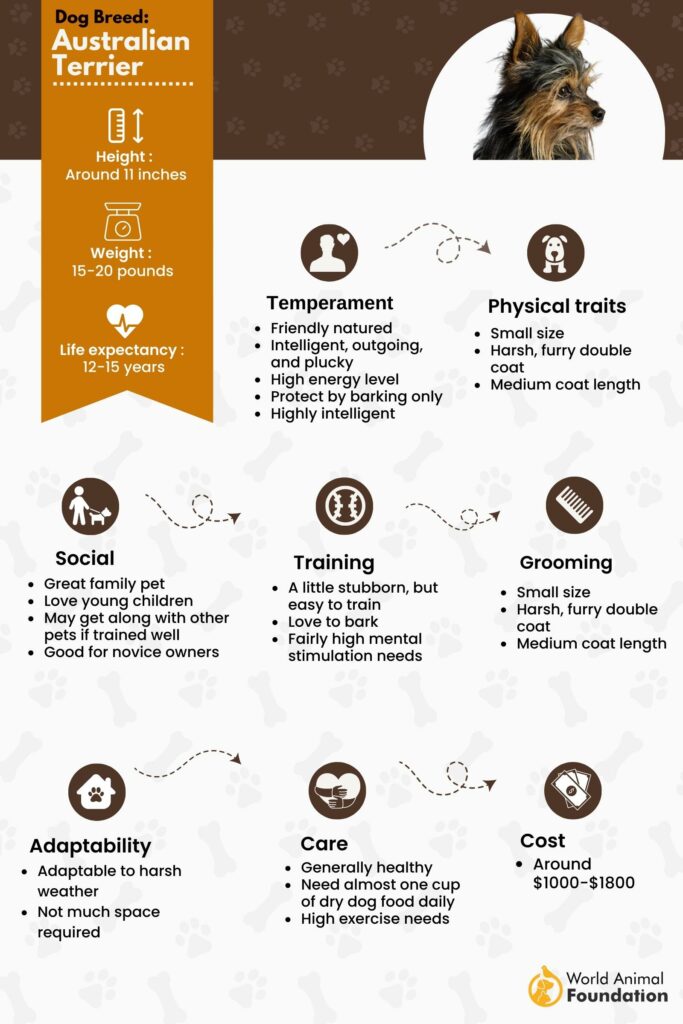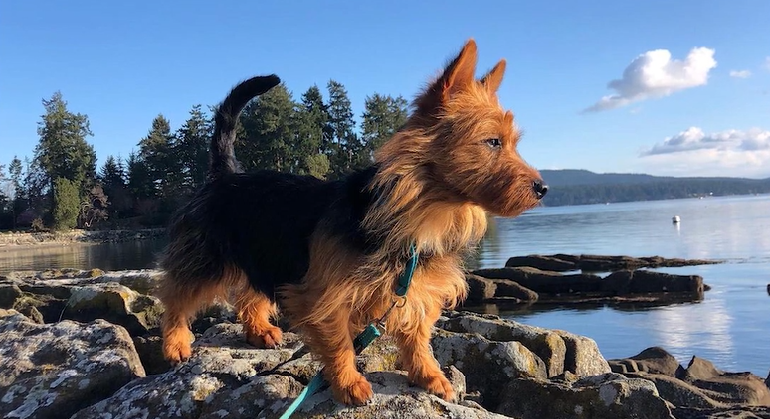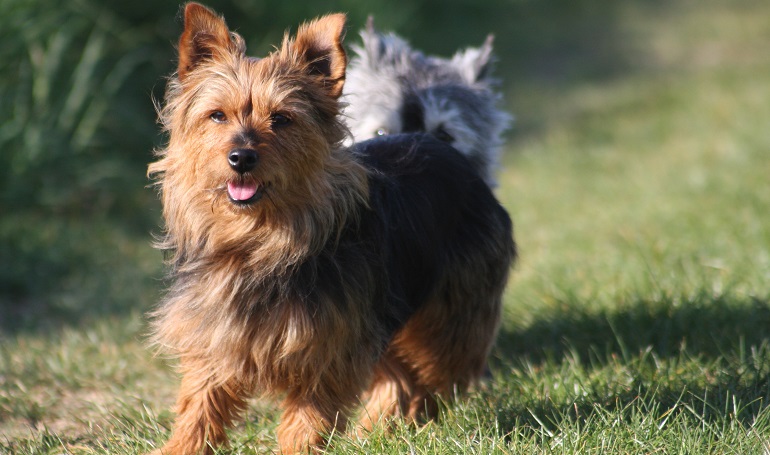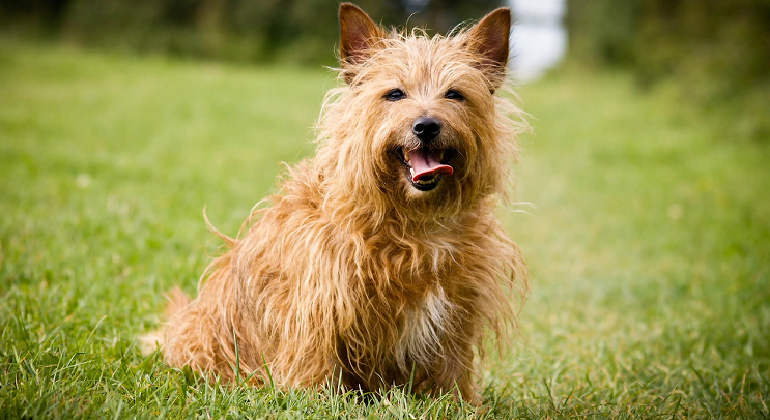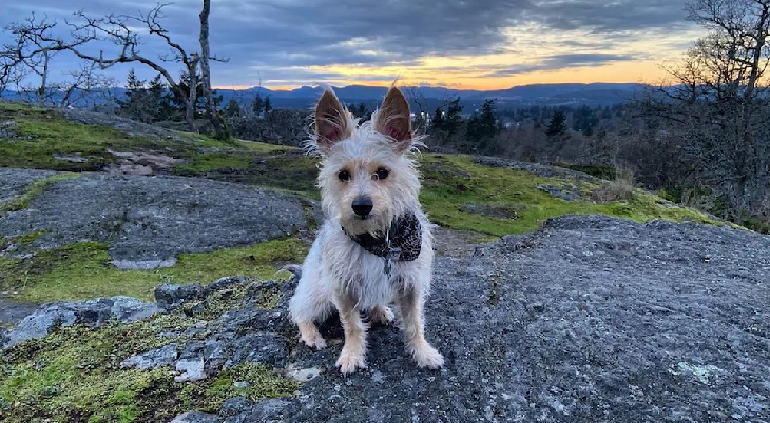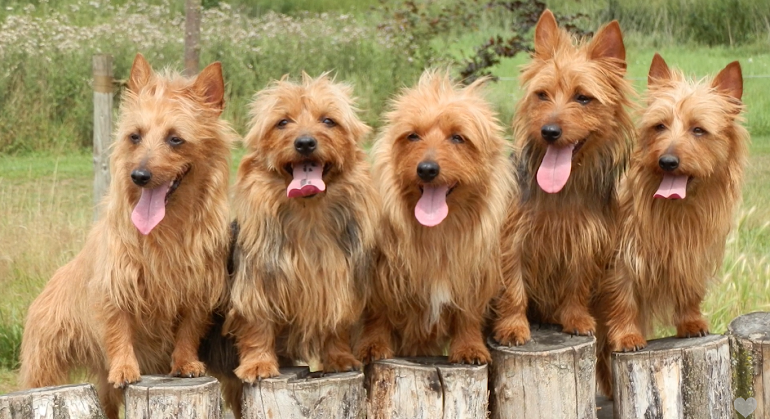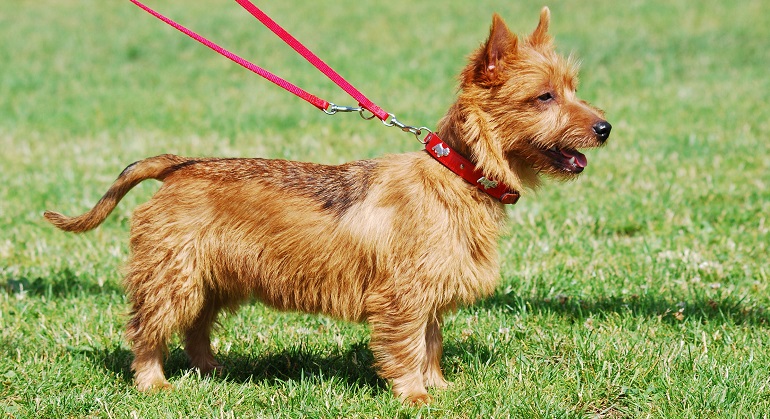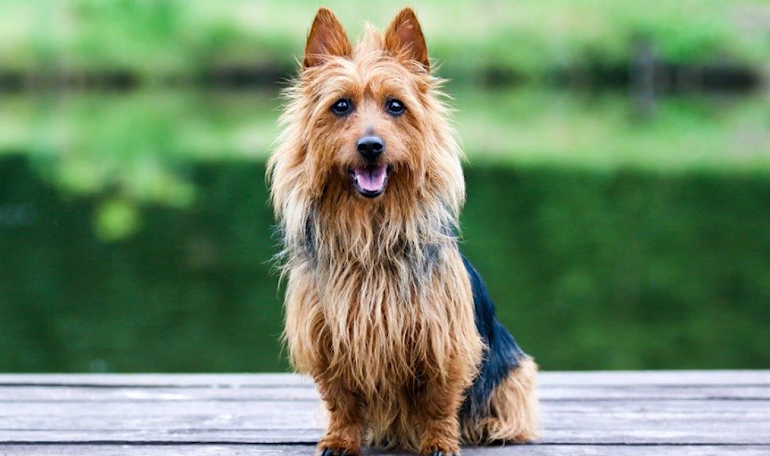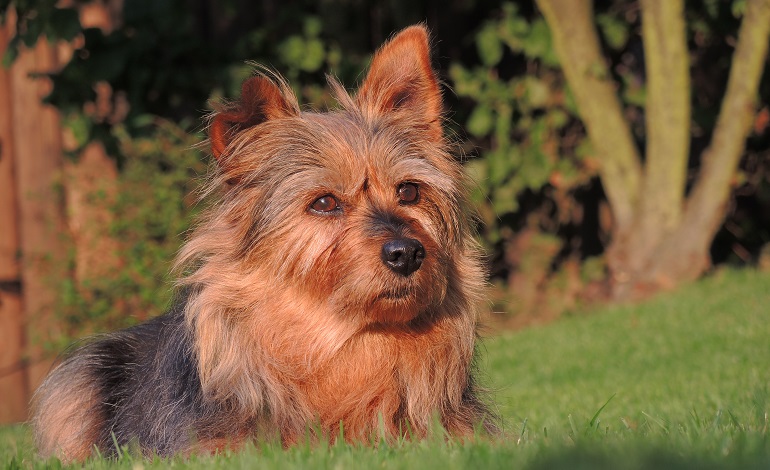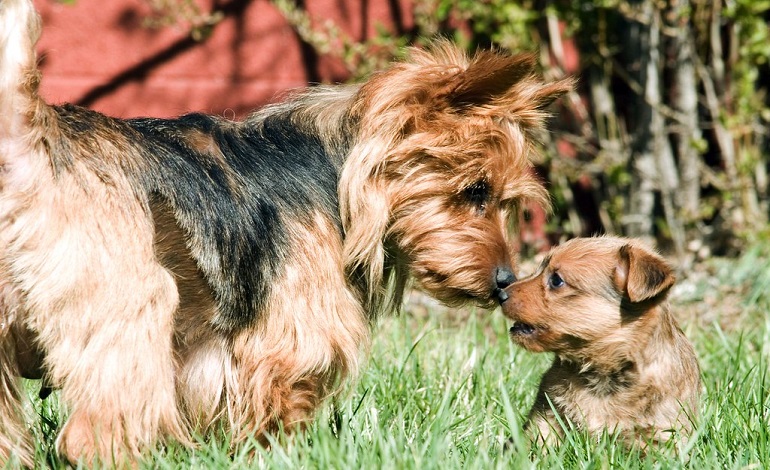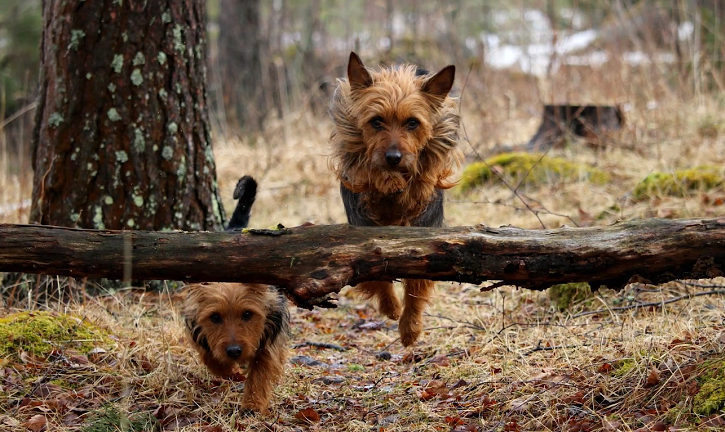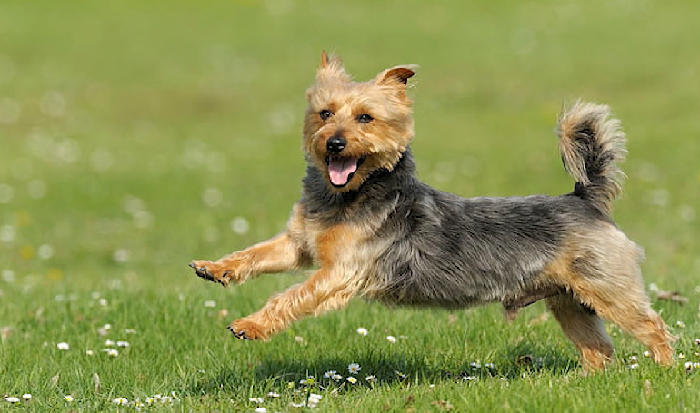Discover the Australian Terrier, a small but mighty breed bursting with personality and charm. This comprehensive guide dives deep into everything you need to know about these spirited companions. From their origins as tenacious vermin hunters in the Australian outback to their modern role as beloved family pets, we’ll explore their temperament, care requirements, health considerations, and training tips. Whether you’re a seasoned dog owner or considering welcoming an Aussie Terrier into your home, this guide provides the essential information for a happy and harmonious partnership.
The Australian terrier is smart, upbeat, and lively. The breed maintains the classic terrier charisma with supreme confidence.
Australian terriers are the smallest of all working terriers. They also hold the honor of being the first native breed registered in Australia. They were originally bred to control the vermin problem in households of early settlers.
Although they are terriers through and through, what makes them different is that they are homebodies. They prefer being indoors with family more than outside or in a kennel.
Having said that, they also demonstrate typical terrier traits of bravery, strength, and wit. They also tend to think independently, so you need to offer regular training sessions to keep them tamed.
If you need help understanding the Australian terrier dog breed, keep reading to find out more about their history, temperament, and needs.
About the Breed
Australian terriers are high-spirited, tenacious, independent, and hard-working dogs. Even though they are little dogs, they have the most amazing personality among all working terrier breeds.
Their playful and fun-loving personalities make them great family pets. They love their house, their owners, and their family members. They are intelligent enough to understand your mood and resonate. They won’t persist for playtime if you are feeling the blues.
Although the self-sufficient Aussie is packed with attitude, it is strongly attached to the family. It offers non-stop entertainment to the young and elderly, always upbeat and silly. It is also great with young kids and children, given that they are respectful and don’t try to agitate the dog.
Australian terriers prefer being the only dog in a house. They tend to be bossy among other dogs and challenge much bigger dogs. If you live in a multi-dog house, you must socialize with the Australian terrier early on to avoid conflict.
Like all terriers, Australian terriers have strong hunting instincts. They chase small pets and small animals. They should never be left alone with cats or rodents pets even if they are trained. Their instinct may take the best of them.
Leash training is necessary for walks. They have high energy and pull on the leash once outside. They spend most of their walk time sniffing around for potential prey. You should also make sure that you keep it in a fenced area if you have open property.
They are highly intelligent and quick to learn. They learn behaviors pretty quickly, so make sure you discourage any undesired activity. Early training can do wonders for their behavior and socialization.
They are suited for apartment living and don’t mind being indoors as long as you meet their needs for exercise and mental stimulation. Just like other terriers, the Aussie puppy loves to bark, dig, and chase.
History of the Australian Terrier
Bred to hunt snakes, vermin, and small animals, the Australian terrier is said to have originated in Tasmania in the early 19th century. According to many sources, a dog named rough-coated terrier that was brought to Australia from Great Britain is the ancestor of this lovely breed.
This terrier was cross-bred with several other terrier breeds to achieve the desired traits of a tough, fast, and weatherproof dog. These included the Dandie dinmont terrier, Yorkshire terrier, Skye terrier, Irish terrier, Manchester terrier, and cairn terrier.
The main job of these dogs was to work on farms alongside farmers. They kept the farms clear of rodents and snakes. They also used to tend to the sheep and alert farmers if there were strangers.
This hardy dog was perfect to work in harsh weather. It made a perfect watchdog and companion for European workers settled on the Australian Continent.
The Australian terrier is the first native Australian breed. The breed was first shown in Melbourne, Australia, in 1868. It was initially referred to as the Australian rough-coated terrier. They were officially recognized as the Australian terrier in 1896 when the breed standard was decided.
The Australian terriers were brought to England by servicemen in the early 20th century. It was recognized by England’s Kennel club in 1933. Soon after, in the mid-1900s, the breed was introduced in America.
The Australian terrier club was formed in 1957. After the efforts of a few breed enthusiasts, the American kennel club recognized the breed in 1960.
Australian Terrier Facts
- The Australian terrier is the smallest terrier dog breed. It may be small but it is filled with big dog energy.
- It is the first Australian breed to be recognized by the Kennel Club of Australia.
- The spirited Aussie is a great companion dog. It proves well as a friend and loves to please its owner. This particular trait sets it apart from other terriers.
- One more thing that makes it different from other terriers is that the Australian terrier does not mind being indoors. It keeps the home life with its energetic aura.
- This pup is very intelligent. Training can be efficient if sessions are short yet engaging. Repetitive instructions are boring and don’t produce results. Treats and appreciation can work wonders.
- They don’t like to share their home with other animals. They like to take the role of a pack leader. If you wish to see it living happily with other animals, you must start with early socialization.
- They are high-energy dogs and need 90 minutes of daily exercise.
- They have an average life expectancy of 15 years but it is not uncommon to see older Australian terriers.
- This furry friend has the instinct to chase and hunt small animals like rabbits, snakes, and squirrels.
- They have a harsh and rough double coat fur. It is waterproof, dirt-repelling, and easy to maintain with just brushing.
- Australian terriers are a hardy dog breed with very few health problems. They are prone to joint diseases and diabetes that can be cured with early diagnosis.
Quick Facts
- Group: Terrier Group
- Origin: Australia
- Type: Working dog, hunting dog, watchdog
- Size: Small about 11 inches at the shoulder
- Weight: Approximately 15-20 pounds
- Color: Blue and tan, solid sandy, Solid red, Solid Black, dark grey blue
- Coat: harsh double coat fur, waterproof, dirt-repellent
- Temperament: Friendly, intelligent, stubborn, dominant, easily distracted
- Shedding: low to non
- Hypoallergenic: Yes
- Exercise needs: High
- Energy Level: Very High
- Apartment dwellers: Yes
- Suitable for houses with small pets: No
Australian Terrier Appearance
The Australian terriers are one of the smallest breeds of the terrier group. They are approximately 11 inches at the shoulder. Their body is longer than it is tall, with short but well-built muscular legs. They have strong shoulders and deep chests.
They have small erect ears with an always alert face-that is a necessary trait of working terriers. They almost always have dark eyes, black noses, and strong muzzles. Aussies also support a ruff around the neck and a top knot of longer hair that add to their intelligent look.
Their tail was originally docked by farmers to protect them from injuries while working in the fields. Now, it is outlawed in many countries, so docked tail terriers are a rare sight.
Size
They are small dogs that are approximately 11 inches tall at the shoulder.
Weight
The males weigh between 15-18 pounds, whereas the females are proportionally smaller and range between 14-17 pounds.
Coat
The Australian terriers have a medium-length harsh coat. They have a double coat of fur. It is rather short at the muzzle, feet, and lower legs. It is longer at the chest and head. The shaggy coat has a soft undercoat that is about 2 inches in length and soft to the touch.
Coat Colors
The Australian terriers typically come in three different coat colors, blue and tan, sandy and red. They can also have other color variations, such as steel blue and tan, dark grey blue, or solid black.
Australian Terrier Temperament and Personality
Australian terriers are the most friendly of all terriers. They might be the only terriers with a tendency to please their owners. The somehow obedient nature makes Australian terriers good pets. They also love children, are easy to travel with, and adapt well to new environments.
Australian terriers have keen senses. As they were bred to be hunters, they are always on the go. They may be small, but they are as confident as any large dog breed.
They do great as watchdogs. They will bark to alert their owners of any unusual or suspicious activity. They fight bravely and never back down from an attack if a situation arises.
The Aussie is fearless and has a strong instinct for chasing and killing small animals like rabbits, squirrels, mice, and even cats. They dominate other dogs and small children. If you have more than one dog in the house, lots of socialization will be needed.
They are not suggested for novice owners unless they are ready to take up the challenge of training the terrier and keeping up with all its requirements.
The Australian terrier loves to dig. You can’t have both a fancy garden and a terrier in the house. They will dig up any open space they find. A securely fenced yard is necessary to make sure they don’t escape. They need a much higher fence compared to their small size.
Australian Terrier Health and Care
Health Problems
The Australian terrier is generally a sturdy and healthy breed, but there are a few inheritable diseases that you should watch out for. Breeders should be careful to test their breeding stock for diseases such as patellar luxation and Legg-calve-perthes disease.
The national breed club recommends health tests for patella evaluation, thyroid evaluation, and ophthalmologist evaluation.
If you own an Australian terrier or you are looking for one, here are a few health conditions you must be aware of.
Legg Calve Perthes Disease
This disease is related to the abnormal deformity of the hip joint. There is reduced blood supply to the femur bone, and the femoral head starts deforming. It results in arthritis of the hip joint.
The cause of this disease is unknown, it can be hereditary or due to a direct injury to the bone. Treatment includes physical therapy and rest. Surgery can treat the condition permanently with just a little lameness in cold seasons.
Patellar Luxation
In this condition, the patella or knee joint dislocates. The kneecap slides in and out of place, causing extreme pain for the pooch. It can be corrected with surgery.
Allergies
Like other dogs, especially terriers, the Australian terrier is also prone to allergies. The symptoms include itching or bald spots. They can be due to something in the food, which is corrected by an elimination diet. Environmental and contact allergies are also common.
Diabetes
Diabetes is common in an Australian terrier and occurs when the body has trouble regulating the sugar levels in the blood. The dog may feel super thirsty or hungry. There will be frequent urination, and lethargy is also common.
Due to poor absorption of food, there may be weight loss. Treatment is possible and effective with early diagnosis.
Grooming
The Aussies have a thick double coat of fur. It is harsh, weatherproof, and repels dirt very well. The coat needs thorough brushing once a week. Brushing will help in natural oil secretion that will keep the hair shiny.
Aussies don’t need a regular bath. They should be bathed only when extremely necessary. The soap and water will strip the hair of natural oils and make it softer than it usually is-reducing its self-cleaning properties. Shampoo can also make the skin dry and flaky.
Check the coat for ticks and mites, especially after walks. Remove if you find any. Take them to the veterinarian if the problem prolongs.
Hair clipping is not recommended for the Australian terrier. It can change the texture of hair and make it smoother than it needs to be. Hand stripping should be done every few weeks. It is a method to pluck out dead hair with hands so that new hair can grow in its place.
This sort of grooming is done better by a professional. It is recommended that you visit your pet salon every couple of months.
The Australian terrier has hair growth between and on top of the eyes. If left unchecked, it can irritate the eyes. Make sure you pluck them or strip them with your hands to avoid discomfort.
Like all other dogs, regular trimming of nails is necessary. Brush the teeth to remove tartar buildup. Lastly, check the ears for any sort of odd smell. Gently clean with a damp cotton ball to remove dirt and avoid infection.
Diet
Like other small breeds, the Australian terrier also has moderate food requirements. Their appetite is better than other terriers, and they are not very choosy. Provide one cup of high-quality dog food every day divided into two or three meals.
Also, keep your dog well-hydrated. Make sure you do not overfeed, as excessive weight gain is detrimental to their joint health.
Always consult with a veterinarian to get a well-tailored diet plan for your dog.
Exercise
These are high-energy dogs that need regular exercise and mental stimulation. Although they would be great in houses with open yards, they do equally well in apartments. Make sure you provide enough exercise and playtime in the park to keep them happy.
On average, they need 90 minutes of daily play sessions or exercise. Take them along on long walks, hiking, or to a local park. Just make sure they are always leashed. If your dog pulls, try using the no-pull dog harness.
Australian Terrier Training
Once you bring the Australian terrier home, you need to set the leadership roles right away. They tend to be very independent and try to take the role of a boss. If you don’t stand your ground and tell them early on about your place, they will surely try to be your leader too.
These spunky pooches also tend to be dominant among other dogs. They don’t like to share their space and may get aggressive. Lots of training and early socialization will help them get along.
They are highly intelligent and learn quickly. They get bored easily if the instructions are repetitive and long. Keep training sessions short and interesting with lots of treats and positive reinforcement, a good incentive always pays back.
Progressively challenging levels of obedience classes and agility training work wonders for the Aussie as they keep him entertained.
If they do not receive enough mental stimulation, they will indulge in negative behaviors. They typically bark a lot and chew on anything they can find if bored.
Conclusion
The Australian terrier is a small dog with a lot of confidence. It is energetic, self-assured, smart, and spirited. There is a lot more to this dog than it appears.
These tiny boss dogs were bred in Australia to help farmers in keeping the properties clear of snakes and rodents and for herding the sheep. They soon became companions for servicemen and made their way around the world.
As hunting dogs, their instincts to chase are very strong. They can be expected to sniff on walks and look for cats and mice to hunt. Their alert nature makes them great watchdogs.
You have nothing to worry about with an Australian terrier on guard.
They need lots of socialization and puppy training classes to behave well among strangers and other dogs. They don’t do well in a multi-dog or multi-pet household as they want to dominate and keep the house all for themselves.
They are sturdy dogs with a long life span. If given proper living conditions, they lead a happy and healthy life.
If you are looking forward to buying purebred dogs, try searching the shelters first. Always buy from a well-reputed breeder who can present all screening tests for the breed.
Let us know about your experience with this dog in the comments below!
Related Guide:
- Silky Terrier
- English Setter
- Kerry Blue Terrier
- Rat Terrier
The Australian Terrier, a small but robust breed, proves an ideal companion for various lifestyles. From their spirited beginnings as vermin hunters to their modern role as devoted family members, “Aussies” charm with intelligence, loyalty, and a playful yet adaptable nature. Their low-shedding coat and moderate exercise needs add to their appeal. While they possess a terrier’s independent streak, consistent training and socialization create a well-rounded, affectionate companion ready for any adventure, indoors or out. Their captivating personality and hardy constitution ensure the Australian Terrier continues to thrive as a beloved breed worldwide.


